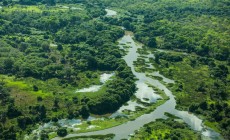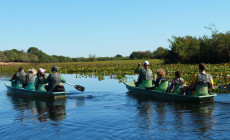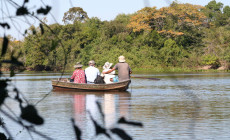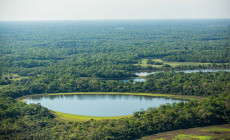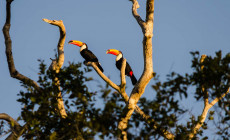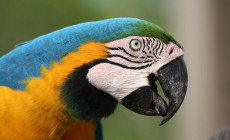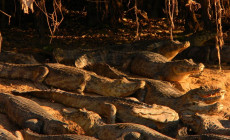-
Latin America
Latin America
- Countries (hidden space)
- Galapagos & Ecuador
- Guatemala
- Mexico
- Panama
- Peru
- Popular Attractions
- Machu Picchu
- Inca Trail
- Easter Island
- Galapagos Islands
- Patagonia
- Rio de Janeiro
- Iguazu Falls
-
Africa
Africa
- Southern & East Africa
- Botswana
- Kenya
- Namibia
- South Africa
- Zimbabwe
- Popular Attractions
- Cape Town
- Okavango Delta
- Sossusvlei Dunes
- Victoria Falls
- The Kruger
- The Garden Route
- Masai Mara
-
Asia
Asia
- Popular Attractions
- Taj Mahal
- Lion Rock (Sigiriya)
- Angkor Wat
- Ha Long Bay
- Kyoto
-
Europe & Middle East
Europe & Middle East
- Europe
- Slovenia
-
Destinations
- Latin America
- Argentina
- Bolivia
- Brazil
- Chile
- Colombia
- Costa Rica
- Galapagos & Ecuador
- Guatemala
- Mexico
- Panama
- Peru
- Asia
- Cambodia
- India
- Japan
- Laos
- Sri Lanka
- Vietnam
- Middle East & North Africa
- Jordan
- Morocco
- Southern & East Africa
- Botswana
- Kenya
- Namibia
- South Africa
- Zimbabwe
- Europe
- Slovenia
- All Holiday Destinations
- Contact Us
-
About
About
Llama Travel provides high quality holidays at the lowest possible prices.
99% recommend us Lower prices - guaranteed Financially protected by ATOL
The Pantanal, which covers an area estimated at 75,000 square miles, is the largest wetland on earth. Around 80% of the wetland falls within Brazil’s borders, contained in the large states of Mato Grosso and Mato Grosso do Sul in the country’s central interior. The Pantanal has an incredibly rich biodiversity and a bewildering abundance of wildlife.
Read our Pantanal blog for a personal insight from one of our Pantanal experts.
Pantanal Location
The Pantanal comprises a landlocked river delta encompassing vast areas of South America (Brazil, Bolivia and Paraguay). With the majority of the 75,000 square-mile natural region spread across south-central Brazil, the wetlands are mostly located within the Brazilian state of Mato Grosso do Sol.
Pantanal Wildlife
For nature lovers, there can be few places in the world more thrilling than the Pantanal. Here are you are almost certain to see species such as macaws, toucans, jabiru storks, caimans, capybaras, rheas and hundreds of species of water birds. It is home to the giant and lesser anteater, the piranha, the marsh deer, giant river otter, puma, jaguar, South American tapir and the anaconda.
There are an estimated ten million caimans in the Pantanal, but the first animals you are likely to spot when entering the area are the humped white cattle which roam the fields in their millions. Nowadays, cattle-raising for beef is the main economic activity, and around 95% of the region is privately owned. In the second half of the twentieth century, intensive farming was a serious threat to the region’s survival. Farming is now closely restricted and conservation is coming to the fore. This is a delicately balanced ecosystem: dry and dusty from July to October, the onset of the rainy season in November causes the tributaries of the Paraguay River north of the Pantanal to burst their banks. The runoff from this upland region is received in the low-lying Pantanal plains. A new world emerges as trees become leafy islands, surrounded by a shimmering sheet of water. When the water starts to recede again in May, birds flock in their thousands to feed on fish trapped in the shrinking pools.
A savannah landscape borders Cuiabá. To the north, around 50km from the city, lies the Chapada dos Guimarães National Park, with dramatic scenery featuring canyons, caves, waterfalls and giant rock formations. The Pantanal occupies a vast area to the south, reached by travelling firstly on the state highways and then on unpaved roads, with an average journey time to lodges of around three hours. The journey is an attraction in itself: it is common to stumble across a timid family of capybaras, the world’s largest rodent, cooling off from the tropical heat in the marsh waters. A pair of red and blue macaws will often launch out of their treetop home, soaring from one tree to the next over pastures peppered with termite nests.
Pantanal Climate
Visiting the Pantanal is a very different experience in the dry and wet seasons. The dry season falls between May and September, and a rainy season between November and March. The coolest month is July, but it is consistently hot, with an average temperature of 30°C. Although each season has its advantages in terms of wildlife, Llama Travel prefers to offer stays in the Pantanal during the drier season, as when the weather is wet, the lodges are often not able to operate excursions.
Pantanal Tourism
Tourism is relatively new to the area, meaning there are only a handful of tourist lodges and you are able to feel at one with nature. For visitors to the Pantanal, there are two principal points of access when arriving from other regions of Brazil: the city of Cuiabá in Mato Grosso, and Campo Grande farther south, in Mato Grosso do Sul. Although each region has its attractions, similar scenery and species of wildlife can be seen in both locations. Llama Travel holidays visit the northern Pantanal, using Cuiabá as a base, as travel times to attractions tend to be shorter.
Until 1977, Mato Grosso and Mato Grosso do Sul were joined as one giant state. In the early eighteenth century, gold and diamond prospecting boosted the region’s economy and the city of Cuiabá was founded. Cuiabá is now the capital of Mato Grosso, which remains one of the richest states in Brazil. The neighbouring city of Várzea Grande is separated from Cuiabá only by the Cuiabá River, and the two have a combined population of around one million inhabitants. The main industry in the area is agriculture: in particular cattle-raising and the farming of soya, cotton and sugar cane.
Pantanal Jungle Lodges
Staying in a lodge is the best way to experience the natural beauty of the Pantanal, allowing you to completely switch off from the outside world and enjoy the nature and wildlife that abounds.
Pousada Rio Mutum
Set within seven acres of leafy grounds on the Banks of the Mutum River, Pousada Rio Mutum is arguably the best lodge in the Pantanal. There are 22 chalet-style detached buildings spread over the grounds, where wildlife including jabiru storks, night monkeys, tapirs, and birds such as chachalacas and cardinals are free to roam. The lodge’s location on the river means that it is particularly good for spotting water birds. In the lake nearby you can spot piranhas, giant river otters, capybaras and caimans. There is an attractive pool area, reading room, map room and a cosy restaurant serving typical pantaneiro cuisine.
Pantanal Activities
The Pousada Rio Mutum offers a full excursion programme including horse riding, wildlife treks, fishing trips, birdwatching excursions, canoe and motorboat rides. In the evening, admire beautiful Pantanal sunsets, spotting caimans and giant river otters as you glide down the river on a canoe. In the evening, there are jeep excursions which take you in search of nocturnal wildlife including anteaters and armadillos.Time can also be spent relaxing by the pool or exploring the riverbanks around the lodge, with the calls of hundreds of birds filling the skies.
If you would like to visit the beautiful Pantanal, call us on 020 7263 3000 to plan your Brazil holiday.

